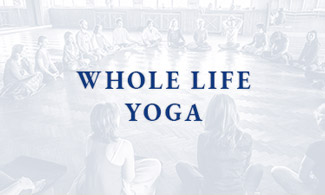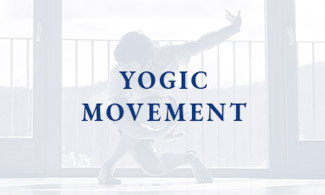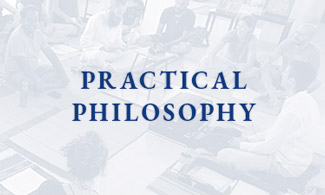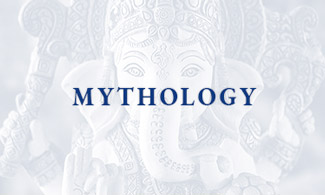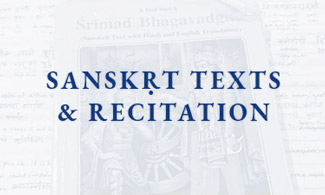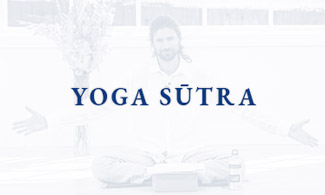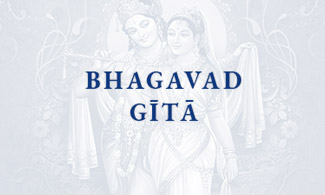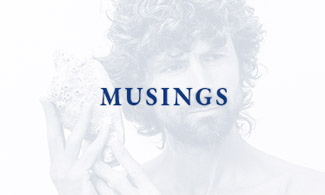
The Battle of Yoga: The Gita: Pandava-s and Kaurava-s
If yoga’s all about peace, why is the Bhagavad Gītā set on a battlefield? And come to think of it, why are we doing all these ‘warrior’ poses? Questions like this are not unusual when we first encounter the Gītā. The dramatic setting is full of purpose though. It seizes our attention and prompts us into an inquiring attitude, both key foundations for yoga practice and exploration. Further, the intense, battlefield scenario works to remind us that no situation need be a barrier to yoga, and actually, the more challenging a situation is, the greater the opportunity for yoga it provides.
The ‘battle’ of the Bhagavad Gītā is not an external one. The two sets of armies are just different sets of tendencies within ourselves. The field, or setting, of kurukṣetra is the field of our actions and experiences. After all, if there wasn’t a battle going on inside ourselves, how would we do things that self-sabotage and go against our deeper longings and higher interests?
The two sets of armies, Pāṇḍava-s and Kaurava-s, are related. They are cousins who have the same grandfather, but different parents. The five Pāṇḍava-s are the sons of Pāṇḍu, which means ‘pure’. Arjuna, the student in the Gītā, is the middle of these five, and his name also means ‘pure’. The Kaurava-s, on the other hand, are named not after their blind father Dhṛtaraṣṭra, but their more distant ancestor Kuru, who gave his name to the very land they are fighting in and over, and who is also of course an ancestor of the Pāṇḍava-s.
So why are the Kaurava-s so called? ‘Kaurava’ means ‘relating to or coming from Kuru’, and ‘kuru’ comes from the verbal root kṛ – to do/to make/to act. Kṛ is the same verb root that gives us the noun ‘karma’, – meaning ‘action’, and the Gītā is really about how to make all our actions yoga.
So one way we can understand it is that the ‘land of the Kuru-s’, where the battle takes place, is really the ‘land’ of our experience, the ‘territory’ of all our experience leading up to now. The Kaurava-s represent those parts of ourselves that are bound by the fruits of our actions. Their name suggests that they are limited by the past, just as we are when, for example, we allow ourselves to be tyrannised by the rational mind and our limited sense of egoic self: ‘I am (only) this, not that’, ‘I have to do this, I cannot do that’, for example.
The Pāṇḍava-s on the other hand, are the sons of gods. As such, they represent the divine potential within us all that can be accessed when we allow ourselves to act beyond the limits of our conditioning and draw on the gifts of our intuitive wisdom and the deep intelligence of our bodies, senses, and hearts, in co-operation with our minds.
The five Pāṇḍava-s’ names are also very telling
Yudhiṣṭhira is the eldest brother. His name means ‘steady in battle or conflict’. He is the son of the god of ‘Dharma’, Dharma being the way of action that sustains and supports the smooth rotation of the wheel of natural Law. Yudhiṣṭhira can be seen to represent the power of conscience, our inner compass that operates through our various intelligences, and, when we pay close attention to it, can help us stay ‘on course’ and oriented in ways that do represent our deeper longing. The second brother is mighty Bhīma, son of the Wind, of tremendous strength. As son of the Wind, he represents our life force, prāṇa, and the tremendous power inherent in the amazing gifts of our bodily and sensory intelligences. Arjuna, the middle brother, ‘the pure one’, is the son of Indra, the King of Heaven and god of revitalising rain. He can be seen to symbolise the power of wholehearted sincerity.
The last two are twins, Nakula and Sahadeva. Born together, they are the sons of the celestial physicians, the Aśvin twins. Nakula means ‘mongoose’ – enemy of mice and of snakes, whose venom the mongoose protects itself from with the sap of the nakuli plant. Nakula then, symbolises our innate power to protect ourselves, stay safe, and gravitate towards nourishment and expansion. He was born along with Sahadeva, which literally means ‘with the gods’. In the yoga system, our very bodily and sensory powers and intelligences are considered ‘devatāḥ’: divine and god-like. So these twins can be seen to represent our innate capacity to heal and protect ourselves when we work with the subtler gifts of our bodies, senses and minds.
The Pāṇḍava-s remind us that we do have the resources we need to find ‘victory’: lasting peace and integration, even in the thick and tumult of life. However, as yoga is practical, it recognises that most often, this requires steadfast effort; because the Kaurava-s, our tendencies to be limited by our past actions and experiences, are not always easy to overcome. Our conditioning may be deeply entrenched. Fittingly, the eldest among the ninety-nine Kaurava brothers (the much larger number representing the seemingly endless ways we can cheat and delude ourselves) is Duryodhana, meaning ‘one who is difficult to overcome in battle’. He is also known by another similar name, Suyodhana, meaning ‘the one who is very strong in battle’!
And is it not true that our conditioning and our old habits can be hard to overcome? When we zero in on them and recognise that we’d like to leave them behind, do these long-term residents of the structure of our sense of self glide away in graceful retreat? Well, maybe it is possible, but more commonly, they fight for their lives! And they are ready to fight dirty and with tenacity.
Sometimes, as we keep seeking truth, exploring what it really means to be ourselves and live in the sweet space of the centre, we have to face the fact that we have wilfully, and of our own choosing, been perpetuating our own suffering. And who wants to admit that? Such realisations can be very hard to accept. Only one of great courage, of broad, far-sighted vision, of positive principles can do this. In other words, only a great warrior can do this.
If we think of vīrabhadrāsana (the posture of the warrior) these are the qualities it incarnates and vivifies within us.
Picture vīrabhadrāsana one with an ‘honest stance’, in which the distance between the front and back feet is only so great that the practitioner could instantly step back to samasthiti (bringing the feet together to stand up tall) at the back foot as easily as forwards to the front foot. We may consider such a foundation a pre-requisite for a genuine warrior posture because a warrior would never take a stance that leaves a large part of himself indefensible, which we would if we overstepped and lost the stability of the back leg. In such a balanced vīrabhadrāsana one, with the four corners of both feet engaged with the earth, the posture is in many ways like the posture of ‘stepping’ along the journey of a courageous life. The back foot supports us to move forwards. It is rooted and supplying vibrant, stable energy to the pelvic centre, heart and spine. This stable connection to the space at our rear can be seen as the yogic warrior-practitioner honestly acknowledging and accepting his or her past, whatever has come before, as it is, so it can support him/her now. The front foot steps forwards, extending into the unknown of the future, yet still connecting back just as vibrantly, just as supportively, to the centre. With front and back legs working harmoniously, even though asymmetrically, the centre is truly centred. And the heart of the warrior-practitioner? Buoyant, yet rooted, open on all sides, vulnerable and receptive, yet also protected by the 360degree global awareness that is really the emblem of the yogic warrior and the foundation for a sustaining, evolving yoga practice.
The first teaching in the Gītā? Arguably, it’s the first imperative verb in the second verse: ‘paśya!’ – ‘Look!’ Be aware, be attentive. That is the practice. And that is what the Gītā and the vīrabhadrāsana postures, dramatic though the setting and symbolism may be, are all about: working attentively with the reality of our life to foster integration even as constant change and sometimes apparent conflict may whirl around us.
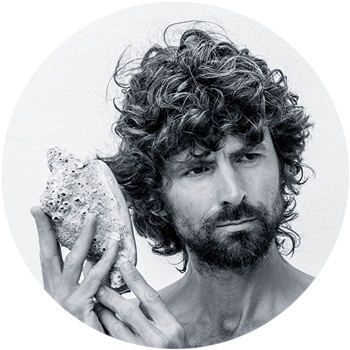
James Boag | Whole Life Yoga
The yoga of the whole human being. Practical philosophy, storytelling, movement, inquiry, looking in ways that reach beyond our habitual ways of looking.
Listen to James’ unique whole life yoga perspectives on the WHOLE LIFE YOGA podcast.

